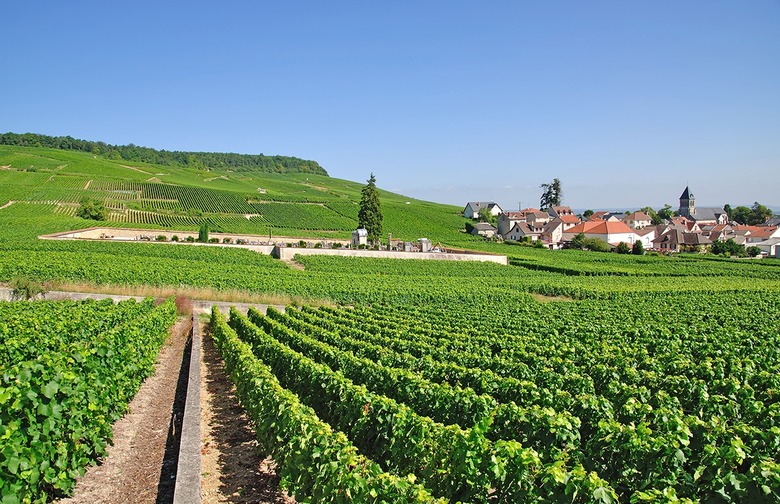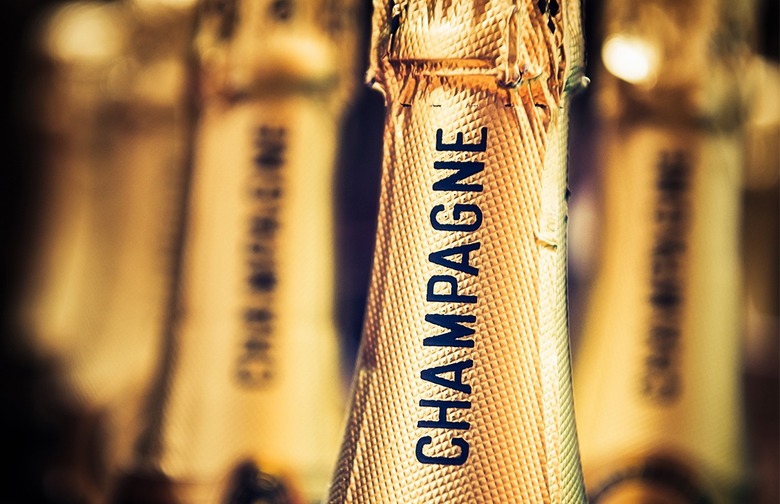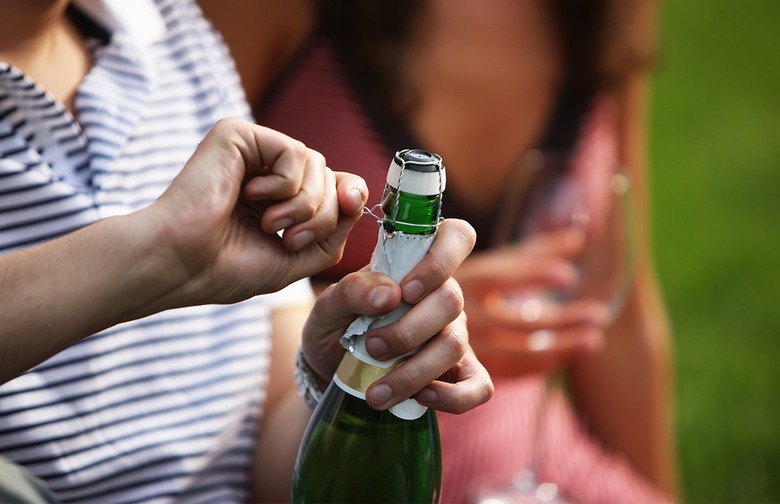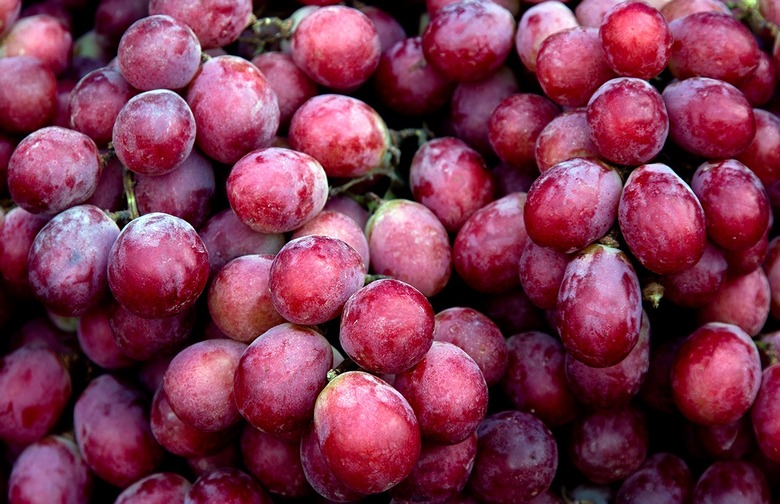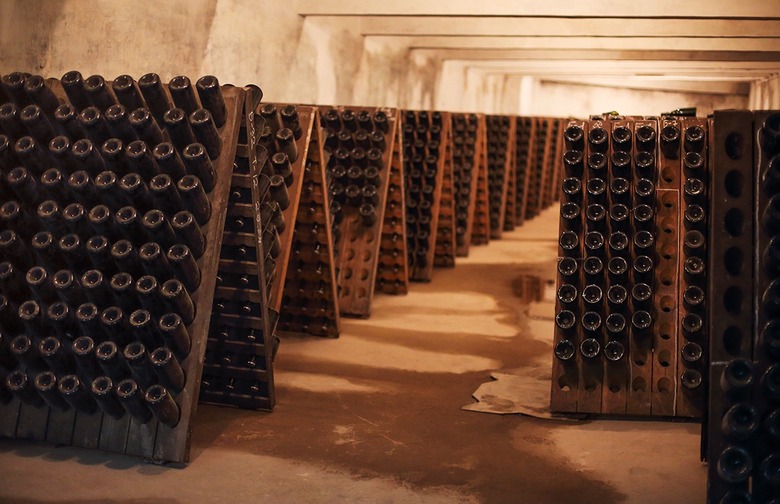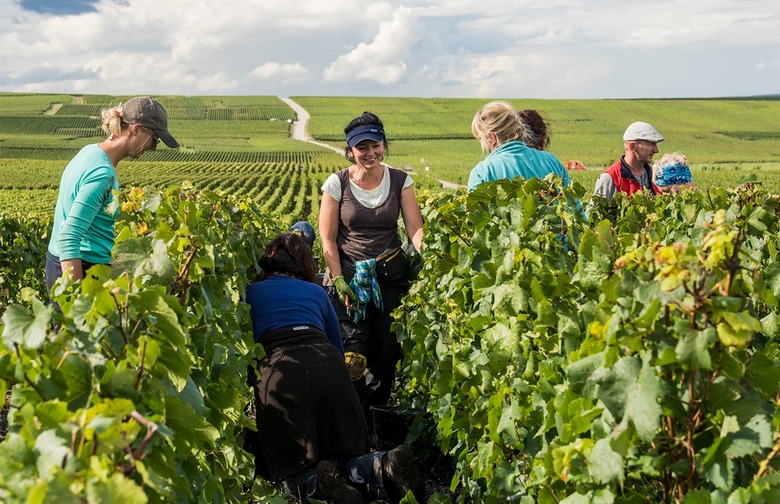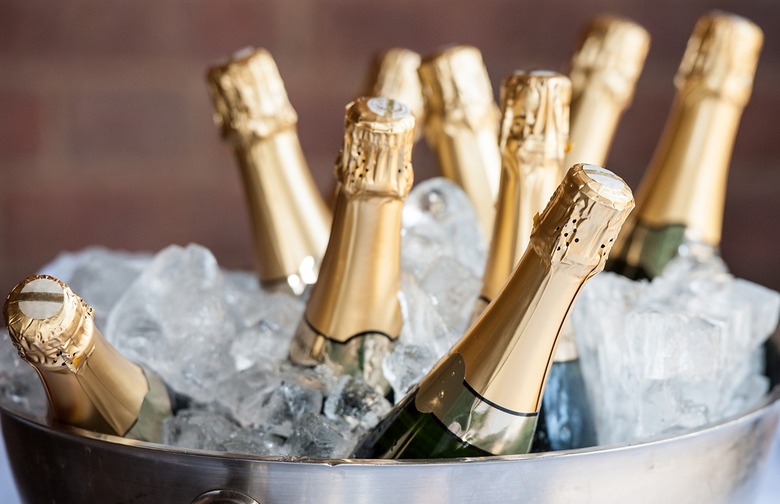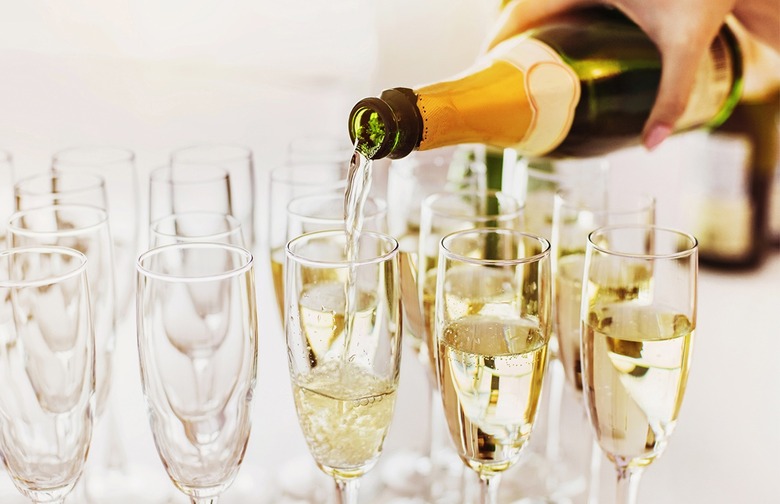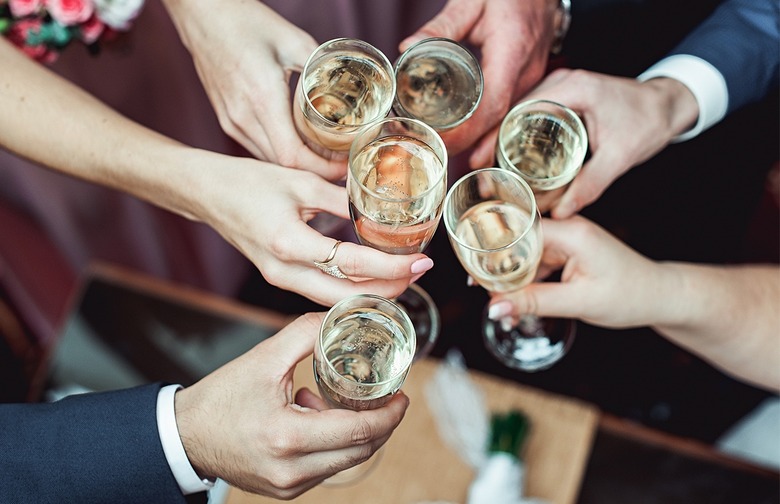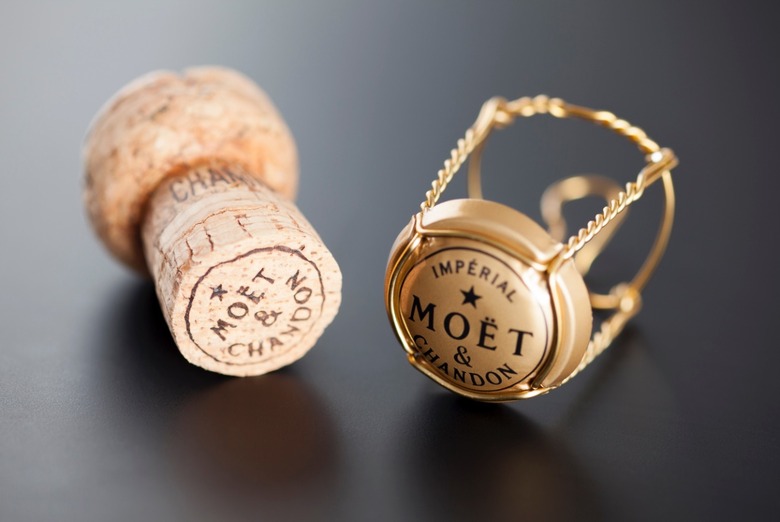11 Things You Didn't Know About Champagne Gallery
Champagne is the universal drink for celebration. Graduated college? Pop open a bottle. Celebrating New Year's Eve? You know Champagne is involved. Special occasions just wouldn't be the same without a fresh bottle of bubbly. But there's a whole world of history and know-how behind both producing and serving Champagne that most eager drinkers just don't know much about.
Like, how is Champagne made? Where do those prized grapes come from? And why are there international laws governing this one type of booze? In sum, what makes Champagne so special?
Turns out, there's a lot about Champagne that's cause for celebration. And not just because it gets you drunk faster than any other drink (even a shot!).
Champagne is centuries-old, and the industry has worked really hard to maintain its celebrity. It was invented in the Champagne region of France (hence the name) and has been a delicacy ever since kings started to use Champagne to celebrate their coronation.
The Champagne region, including quaint towns such as Epernay and Reims, is quite small. But Champagne production is huge. Beneath the acres of vineyards, there are thousands of underground cellars and caverns storing millions of bottles of aging bubbly. As residents often say, "Reims is a piece of cheese." Like Swiss cheese, the land is filled with holes. But unlike Swiss cheese, which gets its holes from a strange source, Reims' caverns come from clay quarries carved in the Middle Ages.
There are approximately 15,000 sparkling wine producers packed in the region. Some of these producers are called "growers," meaning that they are small, often family-owned businesses. Others are called Champagne "houses," which produce a majority of the Champagne distributed around the world. These are likely the Champagne brands you've heard of, the largest one being Moët & Chandon.
But all Champagne has a few things in common — and some little-known quirks that make this dazzling drink even more special.
Champagne only comes from Champagne
Some companies are getting away with making "California Champagne" or claiming to make Champagne from another region, but according to the French, that's not really allowed. There's actually a huge legal battle over the distinction (more on that later). Champagne, by French law, can only come from the Champagne region of France. Prosecco? Not a type of Champagne. Sparkling wine? Not the same thing. Just like a square is a rectangle but not all rectangles are squares, Champagne is a sparkling wine — but not all sparkling wines are accepted as Champagne.
You can be sued if you use the word “Champagne” on a product
It's basically the "booze that shall not be named" — unless you actually got it from Champagne, France. Numerous companies have been sued for incorrectly using the word "Champagne" on a product label. Soaps, candles, baked goods — it doesn't matter. If the product doesn't actually contain Champagne from the Champagne region of France, it can't use the word. Aldi got in trouble when they sold a "Champagner Sorbet" in Germany in 2017. Whoops.
There's actually an organization responsible for enforcing these rules (along with other strict regulations on Champagne production and quality control) around the world. It's called the Champagne Bureau (la Comité Champagne in French), and it was formed in response to a centuries-old battle over the exclusive title.
To the Champagne Bureau's dismay, some wine companies such as André have been getting away with calling their products "California Champagne" or using a similar distinction for some time — despite a lawsuit the bureau won in the 19th century enforcing the rule. The Champagne Bureau continues to struggle for sole custody of the appellation.
You can’t keep Champagne unopened for too long after you buy it
Saving that nice bottle of Champagne for a special occasion? Don't. Unlike many types of wine, which only get nicer as they age, Champagne is kept by distributors in cool cellars until they are right to drink. As soon as a Champagne grower or house distributes their product, it is meant to be opened. Champagne is best preserved in the precise temperatures and surroundings found in the cellars of Champagne, France. If you keep Champagne in the wrong climate for too long, the taste will be off.
Some Champagne is made from red grapes
Red wine is made from red grapes and white wine is made from white grapes... Right? Wrong. There are three types of wine grapes used to make authentic Champagne: pinot noir, pinot munier, and chardonnay. These are the three types of grapes grown in the Champagne region. Both pinot noir and pinot munier grapes are red.
Champagne bottles explode surprisingly often
When you pop open a bottle of Champagne, that cork can fly. That's because of the heightened air pressure built within every bottle. Sometimes, this air pressure gets to be too much for the glass bottle the bubbly is contained in — and the bottle can literally explode. This used to occur far more often, back when people didn't realize why bottles were exploding and didn't know how to prevent it. Now, it's relatively rare, since Champagne producers expect and can prevent these explosions during the yearslong fermentation process. However, it's sometimes still unavoidable. Touring cellars of fermenting Champagne, you'll often see gaps in otherwise perfectly-stacked bottles or puddles on the floor from a recent explosion. But don't worry — the bottles probably won't explode on your shelf. The yeast, which ferments the Champagne and increases the bottle's air pressure, is almost always removed before Champagne is sold.
Champagne grapes must be picked by hand
One of the quality-control regulations imposed by the Champagne Bureau is that grapes used to produce Champagne must be hand-picked. No machines or automation allowed — every harvest, Champagne growers and houses must hire trained help to pluck each and every quality grape from the vine. There's a specific way to pick the grapes so as to achieve the best quality, too; so these workers must be trained for the harvest in advance.
You shouldn’t store Champagne in the refrigerator
Champagne is definitely best served chilled, but you should wait until right before you drink to move your bottle to the fridge. Even though the fridge is accomplishing some quality control (the taste of Champagne is best preserved in a cool, dark space) the environment is way too dry. The air of your refrigerator can negatively affect the cork, causing it to dry out and shrink. When the cork shrinks, some of the bubbles can escape — and other smells or flavors can creep in. Keep your bubbly in a cupboard or closet instead, resting on its side. While you're at it, you stop storing these foods in the fridge, too.
Champagne used to be murky, not clear
In order to ferment Champagne, producers must add yeast to the bottle and allow it to sit, nose-down, for years until it's ready to drink. The yeast forms a pile of sediment that's often removed before the Champagne is sold. But it's only thanks to relatively new (like, invented 200 years ago) technology that the yeast can be removed. Veuve Clicquot, the woman behind the now-famous Veuve Clicquot brand of Champagne from Reims, invented a special rack meant for storing wines so that the yeast could collect at the neck of the bottle. From here, the yeast can be removed before the bottle is once again cork-sealed. But before she devised this method, Champagne had yeast floating inside of it, making each glass look murky.
Most people drink Champagne from the wrong kind of glass
Champagne flutes? Actually not great for drinking Champagne. They look pretty, which is actually a big part of why they got so popular. But Champagne tastes the best when you can get a good whiff of it first — the smelling of the drink beforehand has a huge impact on the tasting experience. Champagne flutes are too small at the top to allow for enough room for your nose to catch an aroma. A much smarter choice for drinking Champagne is a wine glass. Don't believe it? Try a tasting side by side and you'll see. The taste is surprisingly different.
The cage around the cork is called a muzzle
Well, the French word for a muzzle, that is. A muselet is a wire cage that keeps the cork cozied inside the bottle until you're ready to pop it open. This keeps your Champagne bottle and its effervescent contents sealed tight to prevent leaking.
Champagne was invented by accident
Dom Perignon, one of the largest Champagne houses in the world, still claims credit for inventing Champagne. It's impossible to verify the story, but legend has it that Champagne was invented by the Benedictine monk Dom Perignon himself. Perignon was cellar master of the Abbey of Hautvillers in Champagne, France. He was responsible for overseeing the extensive wine production done there and was therefore given the task of trying to eliminate bubbles from appearing in wine during fermentation — the bubbles were thought to ruin the wine. However, when Perignon failed, he tried tasting it, bubbles and all. "Come quick!" the legend says Perignon shouted. "I am drinking the stars!" After this, Champagne became its own highly valued genre of wine. Champagne isn't the only food that was invented on a chance occurrence. These now-popular foods and drinks were also completely accidental.
More from The Daily Meal:
20 Things You Didn't Know About Starbucks
We Bet You Didn't Know These States Made Wine
20 Reasons Why You Should Drink a Glass of Wine Every Day
Wine Holidays: 18 (Sort of) Official Excuses to Pop More Corks

